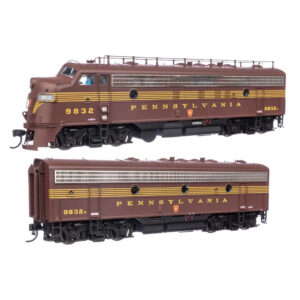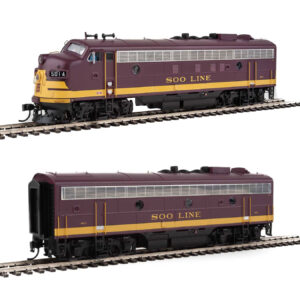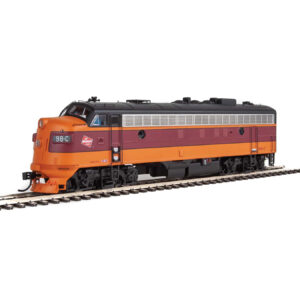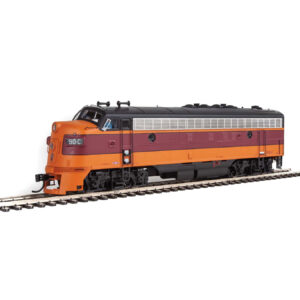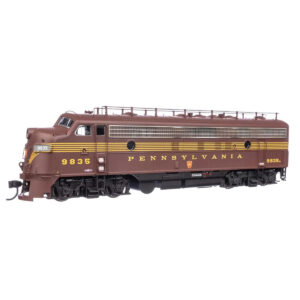FP7 Diesel Locomotive
Prototype Information
The EMD FP7 rolled out in 1949 as a dual-service locomotive built to handle both passenger and freight trains. General Motors’ Electro-Motive Division took the proven F7 design, stretched the frame by four feet, and added a steam generator with water tanks for passenger heating. With its 1,500-horsepower 567B prime mover, the FP7 gave railroads a single locomotive that could cover long passenger runs and then move directly into freight service.
Railroads across North America put the FP7 to work. The Southern Railway, Milwaukee Road, and Canadian Pacific all relied on it for dependable passenger power. Between 1949 and 1953, EMD built 324 units in the U.S., while General Motors Diesel in Canada added another 57. Even as passenger service declined in the 1950s and 1960s, railroads kept their FP7s running in freight service and later on excursion trains. Today, several FP7s still operate on museums and tourist lines, showing off the streamlined look and versatility that defined the locomotive.
Showing all 6 results
-
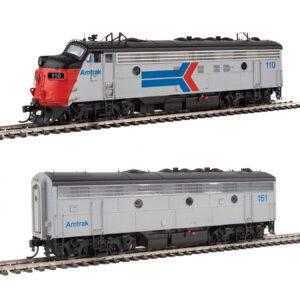
Walthers Proto HO FP7A & F7B Amtrak “Phase 1” w/ DCC & Sound
$457.00 Select options This product has multiple variants. The options may be chosen on the product page -

Walthers Proto HO FP7A & F7B Pennsylvania “Five Stripe” w/ DCC & Sound
$498.00 Select options This product has multiple variants. The options may be chosen on the product page -

Walthers Proto HO FP7A & F7B Soo Line w/ DCC & Sound
$457.00 Select options This product has multiple variants. The options may be chosen on the product page -

Walthers Proto HO FP7A Milwaukee Road “Cab Logo”
$158.00 Select options This product has multiple variants. The options may be chosen on the product page -

Walthers Proto HO FP7A Milwaukee Road w/ DCC & Sound
$233.00 Select options This product has multiple variants. The options may be chosen on the product page -

Walthers Proto HO FP7A Pennsylvania “Five Stripe” w/ DCC & Sound
$249.00 Select options This product has multiple variants. The options may be chosen on the product page


